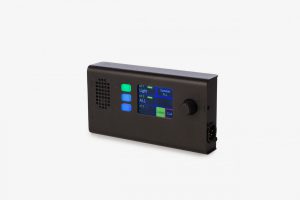Green-GO provides ground-breaking solution for Carabineros HQ
October 2019Santiago, Chile – When Chile’s national police force, the Carabineros, needed a new intercom solution for the lecture theatre at its Santiago headquarters – one which would be unaffected by the building’s busy RF environment – they turned to local audio-visual integrator VGL. Their solution, a digital intercom system from Green-GO, would mark a technology milestone as the first IP-based intercom system to be installed in the country.

VGL, a specialist technology provider for broadcast and entertainment, understands the growing importance of IP technology for sound, video and lighting systems. Having recently encountered Dutch manufacturer ELC Lighting and its innovative Green-GO digital intercom system at the Prolight+Sound exhibition in Germany, they were confident that Green-GO’s Ethernet network technology would provide the answer that the Carabineros were looking for.
“They needed an intercom system with a good quality of sound, which was easy to use and would be scalable in the time,” says VGL’s Daniel Vinagre. “They didn’t want matrix-based or RF technology, as they have many systems tracking RF signals.”
He continues, “The first thing we needed to solve was to implement a digital system capable of operating in a stable frequency beyond the RF tracker, otherwise we would have audio drop-outs. The second challenge was to have the whole theatre connected with wall panels and Wireless intercoms.”
Using Green-GO system components, VGL designed a typical theatre intercom setup. Wall panels in the FOH control position provide access for the sound and lighting operators. On stage are another two wall panels, one each side of the stage, plus an MCX multi-channel 19” rack-mounting station with a gooseneck microphone. The wired system is connected through switch units via standard Ethernet cabling, while four wireless beltpacks connect seamlessly into the system via two Green-GO antennas.
Green-GO IP technology allows the implementation of a full intercoms system without expensive central matrixes and complex, time-consuming programming. “It is a very ‘plug-and-play’ solution,” says Vinagre. “In fact, the customer started to use the system even before it was fully installed – they just grabbed the wireless antennas, connected the beltpacks and they were using the wireless intercoms right out of the box.”
The system meets all the client’s current needs and, importantly, offers easy and affordable upscaling in the future. “They are very happy with it, and are already considering getting the system to integrate with more devices, like using their mobile phones as belt-packs, for example,” says Vinagre. “Also, the possibility to use different headset brands for the belt-packs was very useful. It sounds great.”
